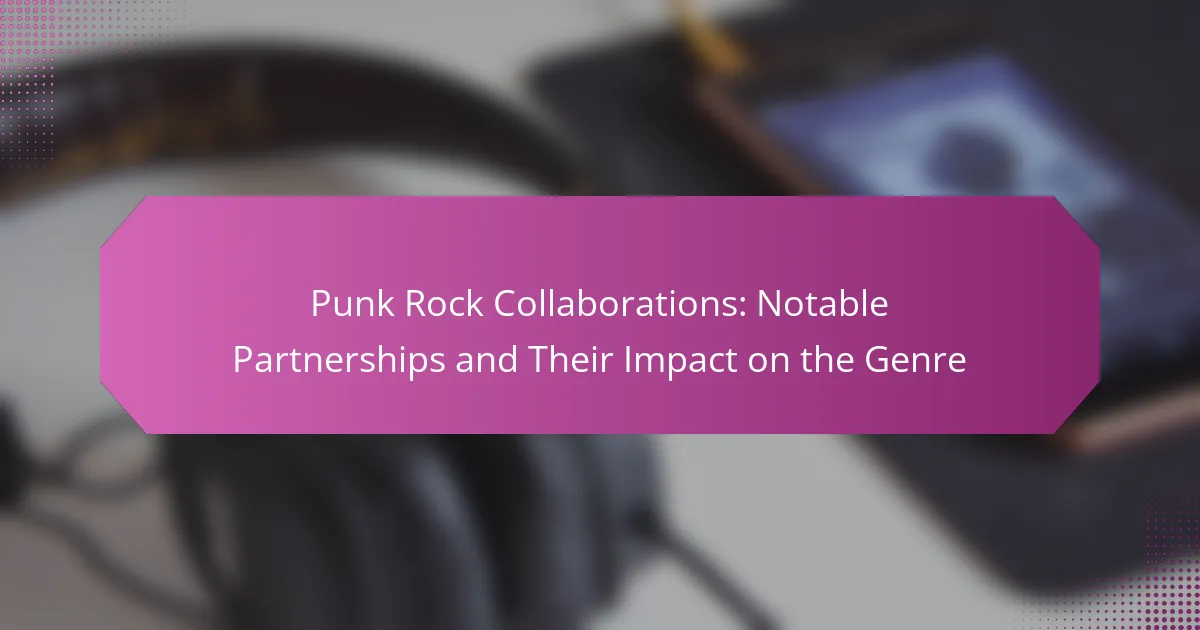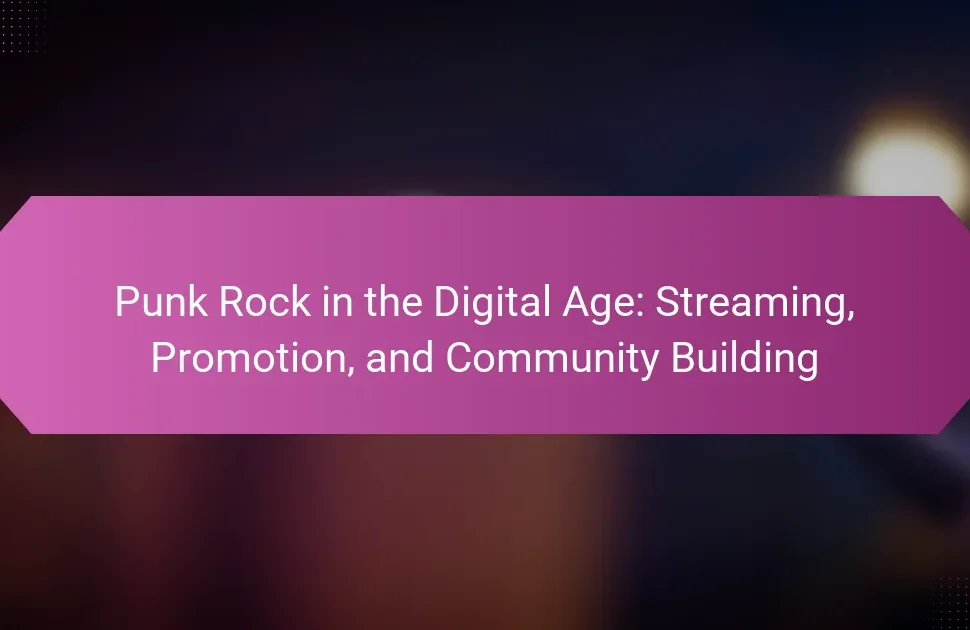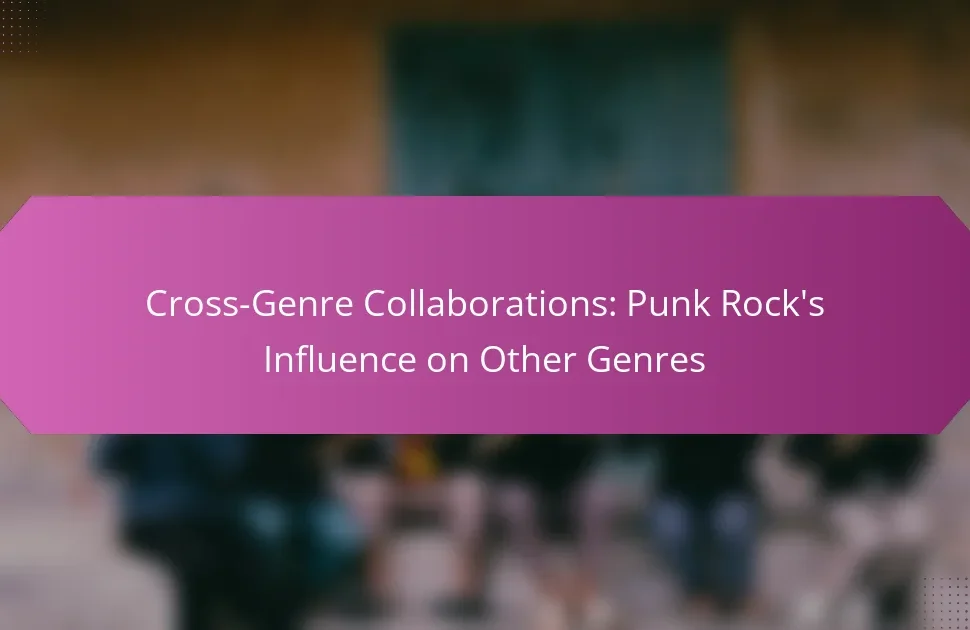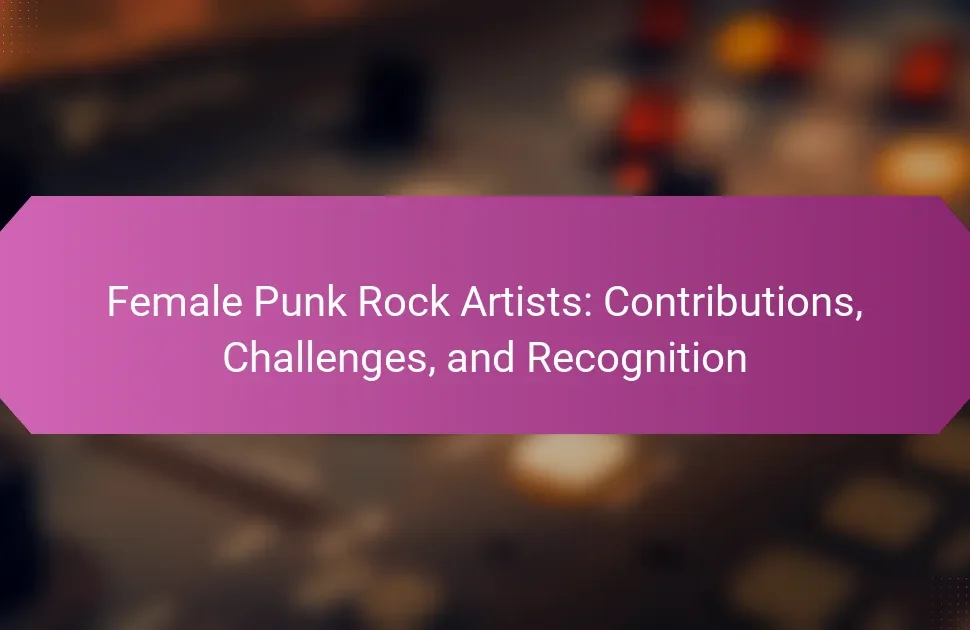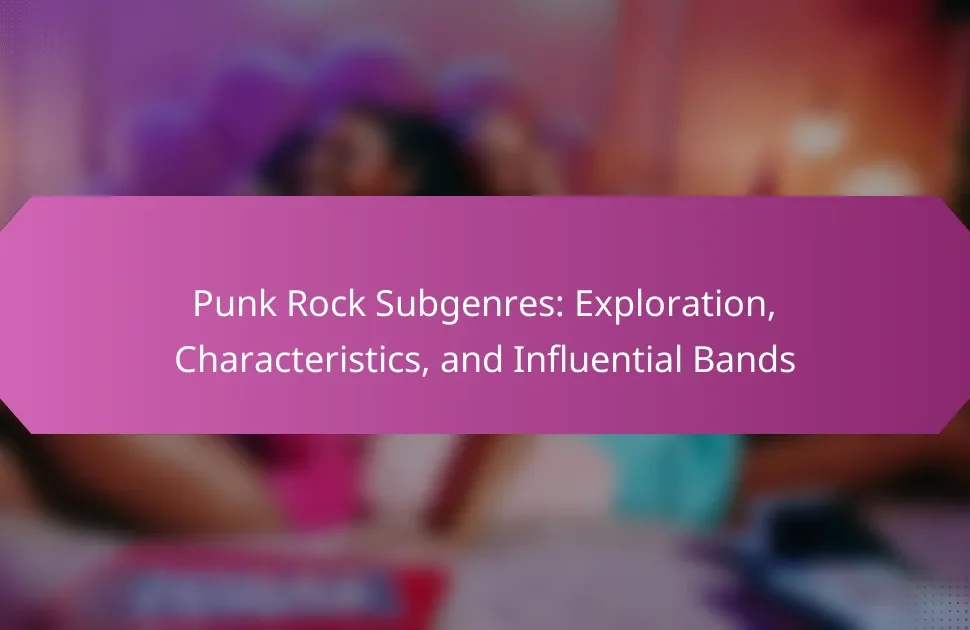Punk rock collaborations have reshaped the genre, blending diverse styles and expanding its reach. Notable partnerships, such as those between The Clash and Elvis Costello, illustrate this evolution. Recent collaborations with artists like Billie Joe Armstrong and Halsey highlight punk’s adaptability. These unique fusions challenge genre boundaries while maintaining punk’s raw essence.
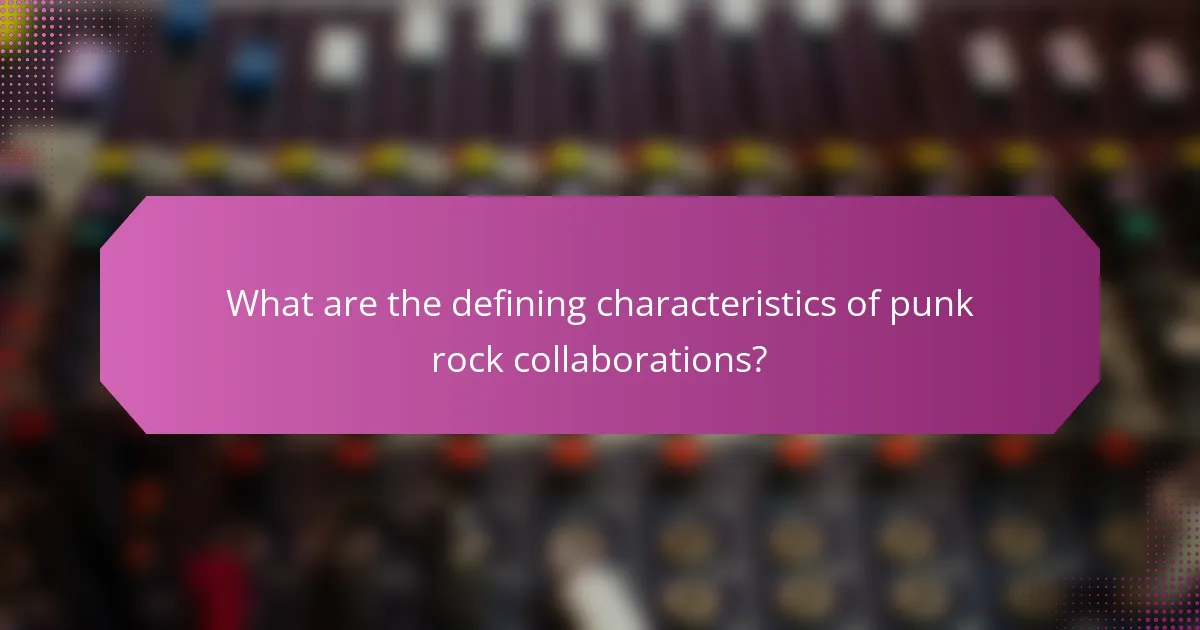
What are the defining characteristics of punk rock collaborations?
Punk rock collaborations are defined by their raw energy, innovative fusion of styles, and cultural impact. These partnerships often feature artists from diverse genres, creating unique sounds that challenge musical norms. Notable collaborations, like those between punk and hip-hop artists, illustrate the genre’s adaptability and influence. The collaborative spirit fosters a sense of community, driving punk rock’s evolution and relevance.
How do collaborations influence the evolution of punk rock music?
Collaborations significantly shape punk rock music by introducing diverse influences and expanding creative boundaries. Notable partnerships have led to innovative sounds and cross-genre experimentation. For instance, the collaboration between bands like The Clash and artists from reggae and hip-hop has enriched punk’s sonic palette. These collaborations often result in unique attributes, such as blending political messages with varied musical styles, which resonate with broader audiences. The evolution of punk rock through collaborations reflects the genre’s adaptability and ongoing relevance in the music landscape.
What role do cultural movements play in shaping punk rock partnerships?
Cultural movements significantly influence punk rock partnerships by fostering collaboration and innovation. These movements often reflect societal issues, inspiring artists to unite for shared causes. For instance, the feminist movement led to collaborations that challenged gender norms in punk, promoting female voices. Similarly, anti-establishment sentiments shaped partnerships that critiqued political systems, enhancing the genre’s rebellious spirit. This interplay between cultural movements and punk rock collaborations enriches the genre and its impact on society.

Which notable punk rock collaborations have made a significant impact?
Notable punk rock collaborations have significantly shaped the genre, influencing its evolution and reach. Partnerships like the one between The Clash and Elvis Costello showcased a blend of punk and new wave, expanding audience horizons. Another impactful collaboration is between Rancid and The Transplants, which fused punk with hip-hop elements, introducing a fresh sound. Additionally, the collaboration of Billie Joe Armstrong from Green Day with Norah Jones on “Foreverly” highlighted punk’s versatility, merging genres while maintaining punk’s raw essence. These collaborations illustrate how cross-genre partnerships can enrich punk rock and broaden its appeal.
How did the partnership between The Clash and Big Audio Dynamite redefine punk?
The partnership between The Clash and Big Audio Dynamite redefined punk by blending genres and expanding its cultural reach. This collaboration introduced reggae, hip-hop, and electronic influences into punk music. The Clash’s willingness to experiment with sound and lyrical themes paved the way for future punk artists to explore diverse musical landscapes. Big Audio Dynamite’s fusion of styles demonstrated that punk could evolve beyond its original boundaries while maintaining its rebellious spirit. This innovation influenced a generation of musicians and reshaped the perception of punk as a dynamic genre.
What was the significance of the collaboration between Green Day and U2?
The collaboration between Green Day and U2 was significant for uniting punk rock with mainstream rock, showcasing the genre’s cultural relevance. This partnership highlighted the adaptability of punk elements in broader musical contexts, influencing future collaborations. Their joint performance at the 2006 Grammy Awards emphasized both bands’ commitment to social issues, reinforcing punk’s role as a voice for change. This collaboration exemplified how punk rock could engage with diverse audiences while maintaining its core values.
In what ways did the punk rock collaboration of Rancid and The Transplants influence the genre?
The collaboration of Rancid and The Transplants significantly shaped punk rock by blending diverse influences. Their partnership introduced elements of ska and hip-hop, broadening the genre’s appeal. This fusion encouraged other artists to experiment, leading to a more diverse punk sound. Their work exemplified a unique attribute of punk collaborations: the ability to innovate while staying true to punk’s rebellious spirit. This influence is evident in the evolution of punk rock in the early 2000s, inspiring new bands to explore genre-crossing collaborations.
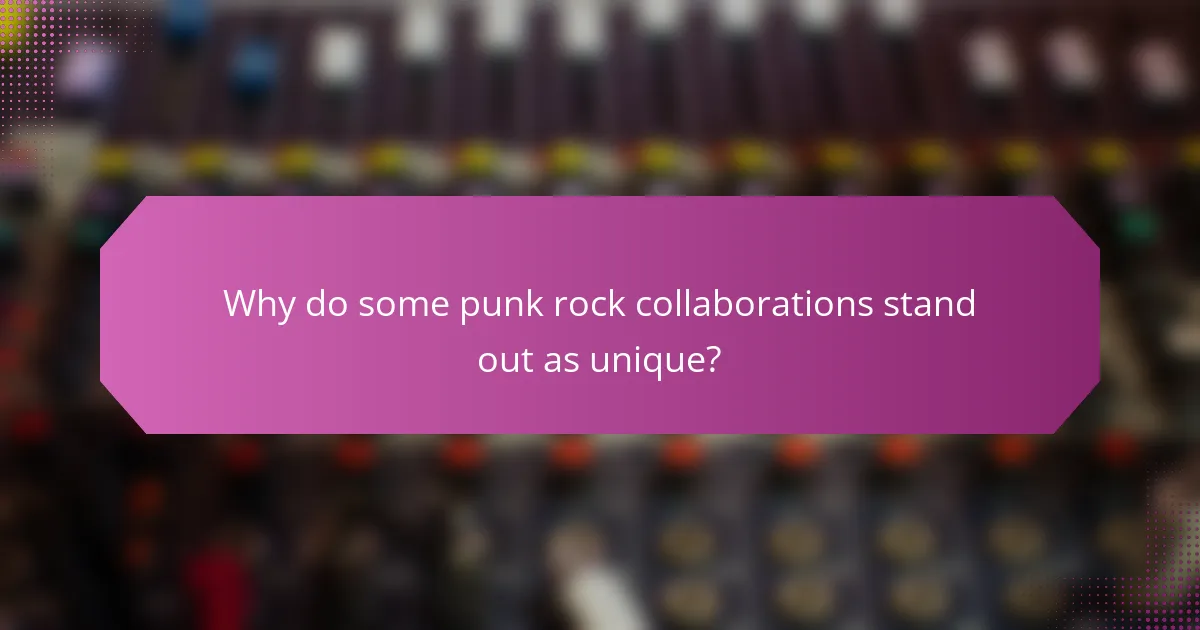
Why do some punk rock collaborations stand out as unique?
Punk rock collaborations stand out due to their innovative blending of styles and unique artistic visions. These partnerships often challenge genre boundaries, creating fresh sounds that resonate with diverse audiences. Collaborations like those between Green Day and Billie Joe Armstrong or The Offspring and other artists showcase distinctive elements, enhancing the punk rock landscape. The rarity of such cross-genre partnerships further amplifies their impact, making them memorable within the genre’s history.
What factors contribute to the success of rare punk rock partnerships?
Collaborations in punk rock succeed due to shared vision, cultural relevance, and innovative sound. Notable partnerships often blend distinct styles, creating unique music that resonates with audiences. The synergy between artists amplifies their influence, fostering a sense of community within the genre. Additionally, strategic timing and social commentary enhance their impact, making these collaborations memorable.
How do collaborations between artists from different genres affect punk rock?
Collaborations between artists from different genres enrich punk rock by introducing diverse influences and expanding its creative boundaries. Notable partnerships, such as those between punk bands and hip-hop artists, have led to innovative sounds and lyrical themes. These collaborations often challenge traditional punk norms, fostering a more inclusive environment. As a result, punk rock evolves, attracting new audiences and maintaining its relevance in the music landscape.
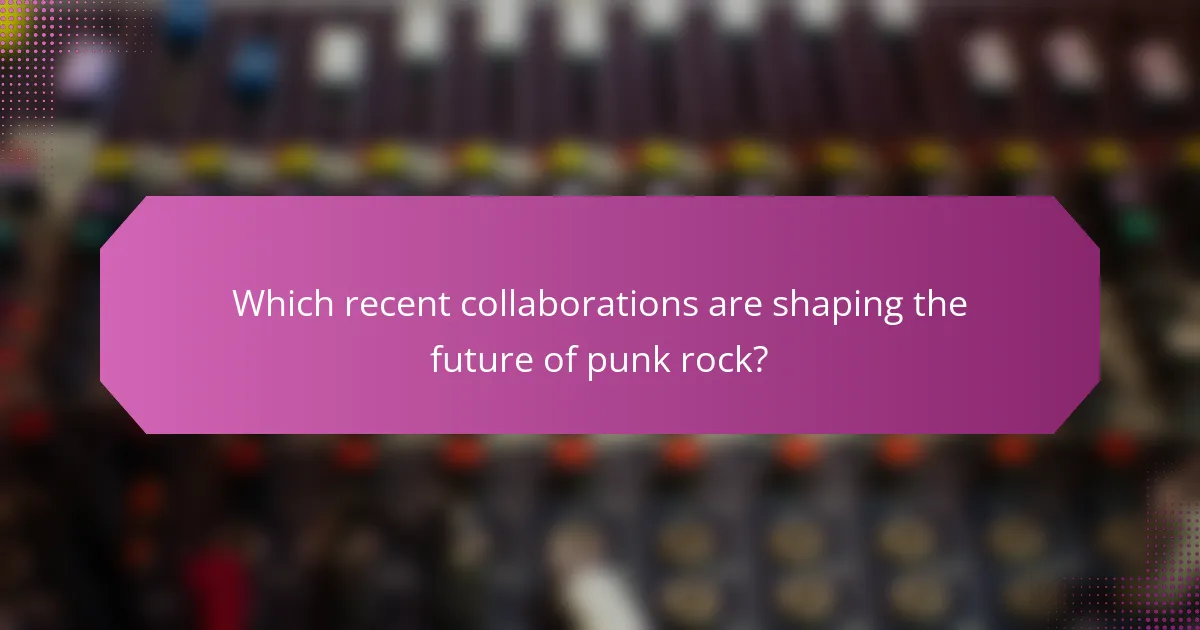
Which recent collaborations are shaping the future of punk rock?
Recent collaborations are significantly influencing the evolution of punk rock. Partnerships between established and emerging artists are blending diverse styles and expanding the genre’s reach.
Notable collaborations include the work of punk legends like Billie Joe Armstrong and contemporary artists such as Halsey, creating a fusion that attracts new audiences. Another impactful partnership is the collaboration between punk icons like Tim Armstrong and rising bands, showcasing a blend of traditional punk with modern influences.
These collaborations often highlight unique attributes, such as the integration of electronic elements or hip-hop rhythms, which are rare in traditional punk. As a result, they are reshaping the genre by introducing innovative sounds while preserving its rebellious spirit.
What emerging artists are collaborating with established punk bands?
Emerging artists collaborating with established punk bands include names like Machine Gun Kelly and Yungblud. These partnerships infuse fresh energy into punk rock, attracting new audiences. Emerging artists often bring unique perspectives, blending genres and styles. Collaborations such as these can revitalize the punk scene, showcasing its adaptability and relevance in modern music.
How are technology and social media influencing new punk rock collaborations?
Technology and social media are revolutionizing punk rock collaborations by enabling global connectivity and creative experimentation. Artists can now collaborate across distances, leading to innovative sounds and styles. Platforms like Instagram and Bandcamp facilitate real-time interaction and promotion, creating a vibrant community. This accessibility allows for diverse influences, enriching the genre with unique attributes. As a result, punk rock is evolving, reflecting contemporary issues and engaging a wider audience.
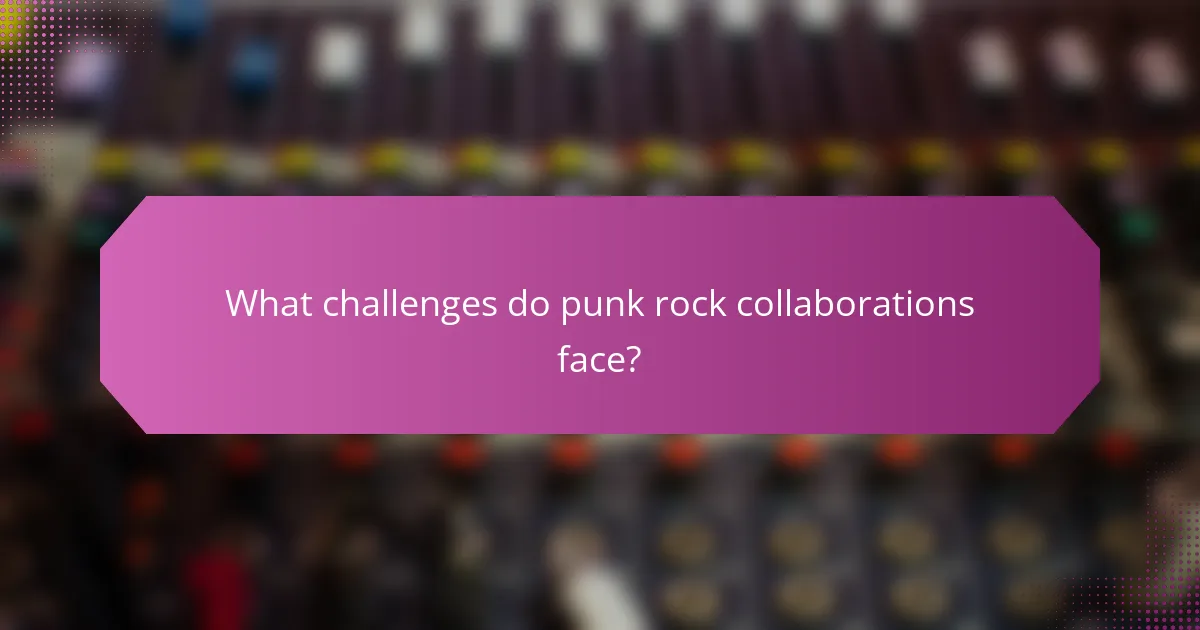
What challenges do punk rock collaborations face?
Punk rock collaborations face challenges such as differing artistic visions, communication barriers, and genre expectations. These factors can lead to creative tensions and impact the final output. Balancing individual styles while maintaining punk’s raw essence is crucial for successful partnerships.
How do creative differences impact the outcome of collaborations?
Creative differences can significantly enhance or hinder collaborative outcomes. In punk rock, varied artistic visions often lead to innovative sounds or conflict. For instance, the collaboration between The Clash and Big Audio Dynamite showcased how contrasting styles can produce unique music that pushes genre boundaries. However, disagreements may also result in tensions that disrupt creative processes, as seen in the tumultuous partnership of Nirvana and Courtney Love. Ultimately, the impact of creative differences in punk rock collaborations can shape the genre’s evolution and influence future artists.
What are the common pitfalls in punk rock partnerships?
Common pitfalls in punk rock partnerships include creative differences, lack of communication, and conflicting visions. These issues often lead to tension and can jeopardize the collaborative process. Additionally, financial disagreements can arise, especially when profits are involved. Trust issues may also emerge, impacting the overall dynamic and effectiveness of the partnership. Addressing these challenges proactively can enhance collaboration and preserve the integrity of the punk rock genre.
How can artists overcome collaboration challenges in punk rock?
Artists can overcome collaboration challenges in punk rock by fostering open communication and embracing diverse influences. Building trust among collaborators is essential for creative synergy. Notable partnerships, like those between bands such as The Clash and The Sex Pistols, demonstrate how collaboration can expand the genre’s boundaries. Emphasizing shared goals and mutual respect allows artists to navigate differences and enhance their collective impact.
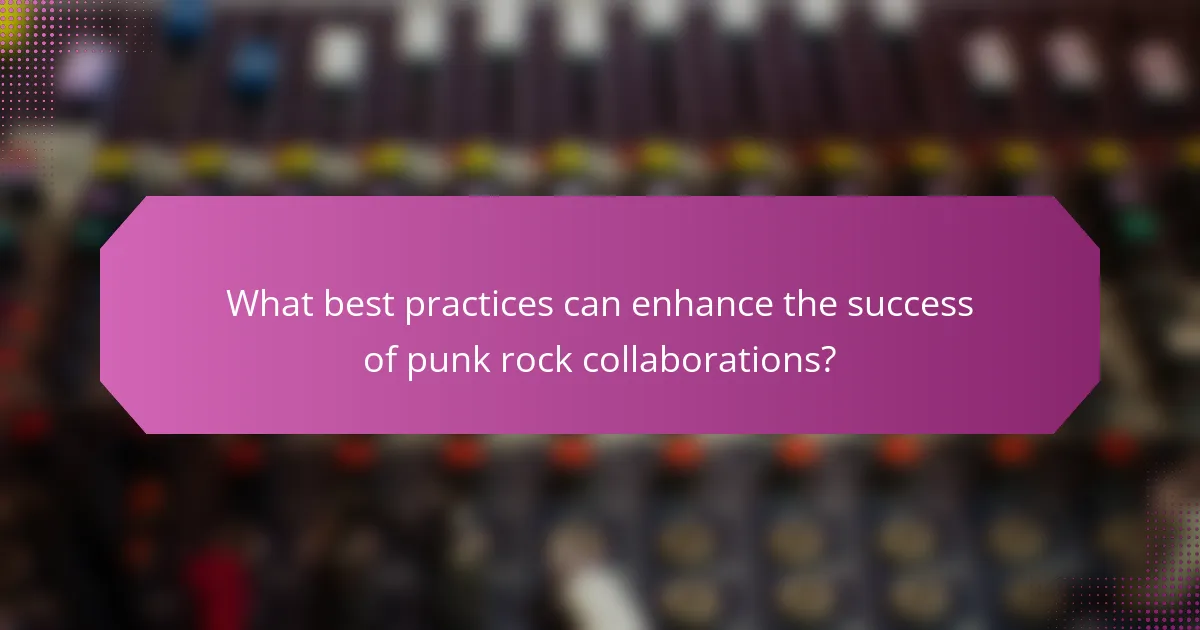
What best practices can enhance the success of punk rock collaborations?
Collaborations in punk rock thrive on shared values and creative synergy. Emphasizing open communication and mutual respect enhances collaboration success. Diverse influences can lead to innovative sounds, while clear roles prevent conflicts. Regular practice sessions foster team cohesion and refine musical chemistry. Celebrating each member’s contributions strengthens bonds and encourages further creativity.
How can artists effectively communicate during collaborations?
Artists can effectively communicate during collaborations by establishing clear goals, maintaining open dialogue, and respecting each other’s creative input. Active listening fosters a collaborative environment. Regular check-ins ensure alignment and address any concerns promptly. Utilizing digital tools for real-time feedback enhances coordination.
What strategies can help maintain artistic integrity in partnerships?
To maintain artistic integrity in partnerships, prioritize clear communication and shared values. Establish boundaries that respect individual creativity while fostering collaboration. Regularly assess the partnership’s direction to ensure alignment with artistic goals. Embrace feedback and adaptability to navigate challenges.
What lessons can be learned from successful punk rock collaborations?
Successful punk rock collaborations teach the importance of creativity, diversity, and community. These partnerships often blend different styles, pushing genre boundaries and fostering innovation. Notable collaborations, like those between The Clash and various artists, showcase how merging influences can create impactful music. Additionally, these collaborations highlight the significance of collaboration in building a supportive scene, emphasizing shared values and collective expression.
